Wednesday, 27 March 24
Mazarron
After a week of north-easterly winds and a short break, we now get a week of south-westerly winds with the same side effects: high swell. At all, it’s not going well. But no matter, I’m no longer under any time pressure. I’ll get north eventually. Now there’s a low-pressure system over Northern Europe with long extensions as far as southern Spain. This weather situation is quite stable, but generates strong south-westerly winds with corresponding swells that run up the entire east coast of Spain.
Garrucha harbour was not particularly calm, even with an easterly swell. That’s why I wanted to use quickly the gap between these two unfavourable weather conditions to reach a more sheltered harbour.
On the way to Aguilas, I was accompanied by a diving school.
Aguilas wasn’t a quiet harbour, either; the nightly jolting of the lines didn’t make a restful night’s sleep. So, I had to move on as quickly as possible before no sailing is possible. The swell was already coming from the south-west, although the front only passed through shortly before Mazarron with the wind shifting to a westerly direction.
Here the swell is not comparable to that on the Atlantic. In the Mediterranean, it seems to be relatively short, even at a height of 1.5 metres. While the bow of amica was still riding the crest of the wave at the front, the stern was already diving in the next wave trough. It only looked impressive this way round, but when the stern was on the crest of the wave, there was occasional a surf time. The tiller pilot can’t steer this, so I had to do it by myself all the time to prevent the boat from flipping over in the waves. In the long run, pretty exhausting.
After the first night in Mazarron, the slight jerking in the lines, as the harbour entrance faces the beach, surprised me. Therefore, it points in exactly the opposite direction to the incoming swell, but waves seem to come around every corner. Today and tomorrow, the waves even expected to reach 3 metres. I’ll have a look at that then. The wind reached 30 to 35 knots in gusts, otherwise it’s more like 10 knots.
And now I have to pay a visit to Mazarron.
Saturday, 6 April 2024
Torrevieja
A week in Mazarron gave me enough time to explore many things at my leisure. I also had to recover from a severe strain in my left calf that I had picked up while mooring in Aguilas. I was therefore only travelling slowly on foot and yes, Mazarron is a town only marginally developed for tourism. Here in the centre you can still find normal life without many tourist shops. My morning view from the boat always showed me the lighthouse and a floodlit statue of Jesus. Absolutely, I had to visit both.
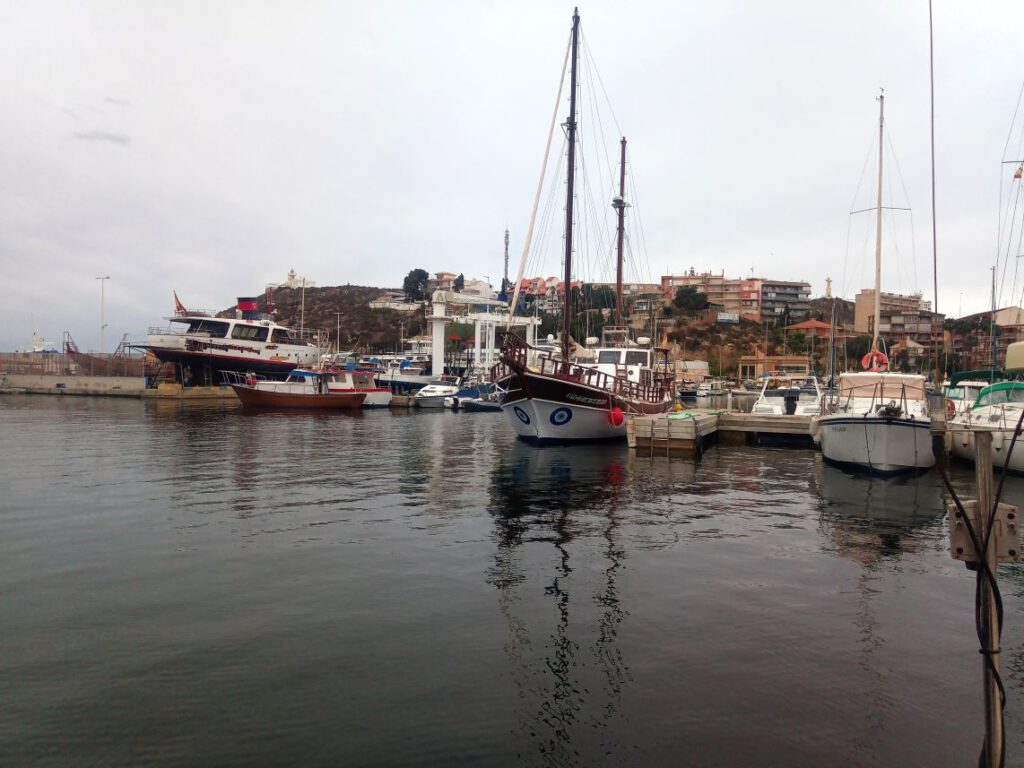
The rocks with the lighthouse on the left and Jesus on the right.
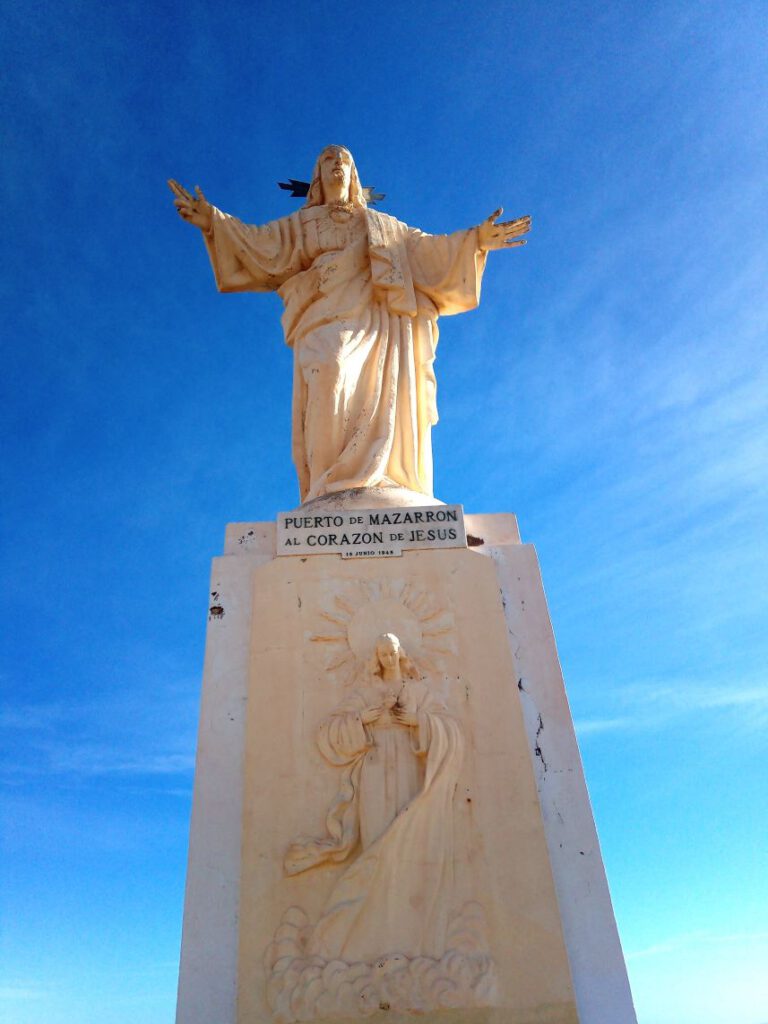
Unfortunately, the lighthouse was not accessible, but I went up to Jesus.
During my slow walks through Mazarron, I kept noticing the façades.
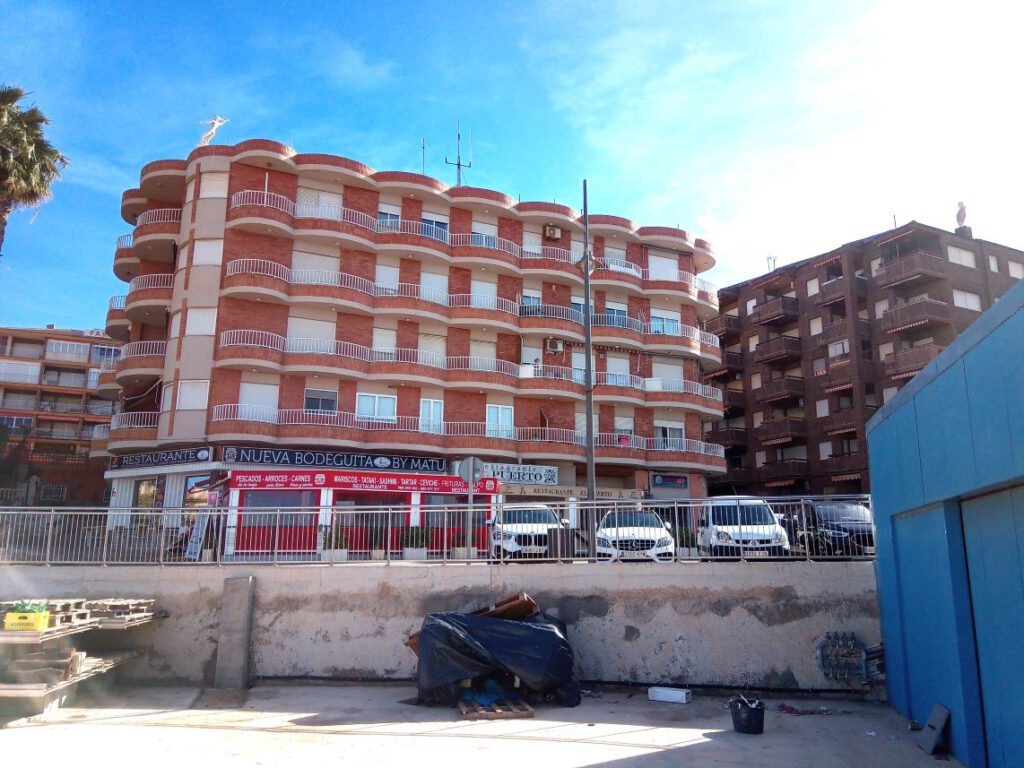
Round façade design
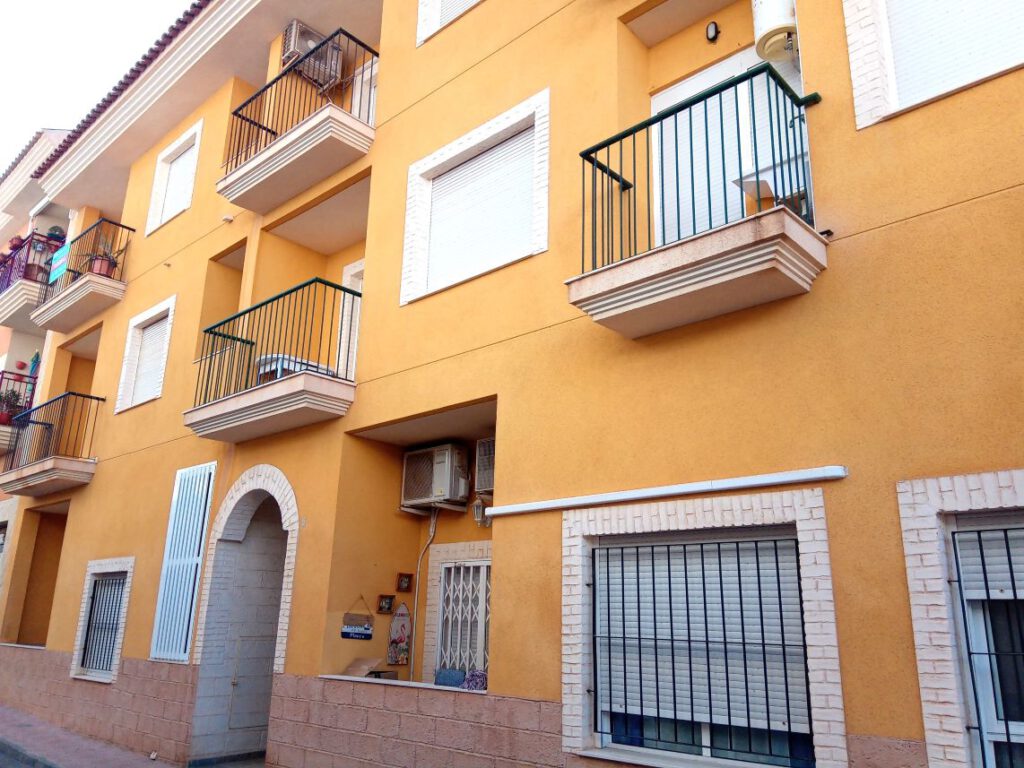
Vibrant colours with lots of contrasting decorations
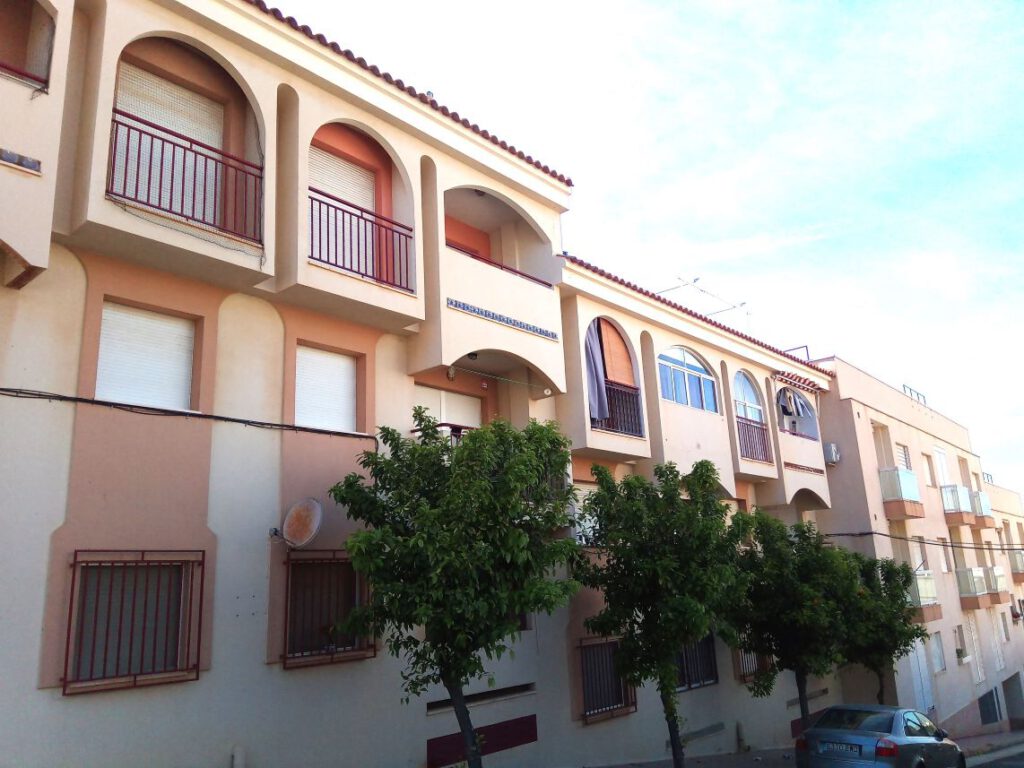
And round arches again and again
Here in Spain, the week before Easter is a holy week, the Semana Santa. Easter is also organized a little differently than in Germany. The public holidays are Thursday and Good Friday, but not Sunday and Monday. Unfortunately, I missed the Easter procession here because I have gone to bed early. You couldn’t miss it from about 11pm, insistent drumbeats, otherwise it was silent. It seemed very sombre, like a death march. They take the crucifixion very seriously here.
Tuesday after Easter we navigate on to Cartagena. Here, as in Cabo de Palos, there was unfortunately no more time for exploring. I had to make some progress to come north and take advantage of the favourable weather conditions. Unfortunately, these consisted of a calm wind, but no waves.
Cartagena seen from the entrance
Forts at the entrance
The entrance seen from the sea. The Carthaginians chosen this place well, the bay is very sheltered.
So, because I will soon miss it: the last rocks along the coast to Cabo de Palos.
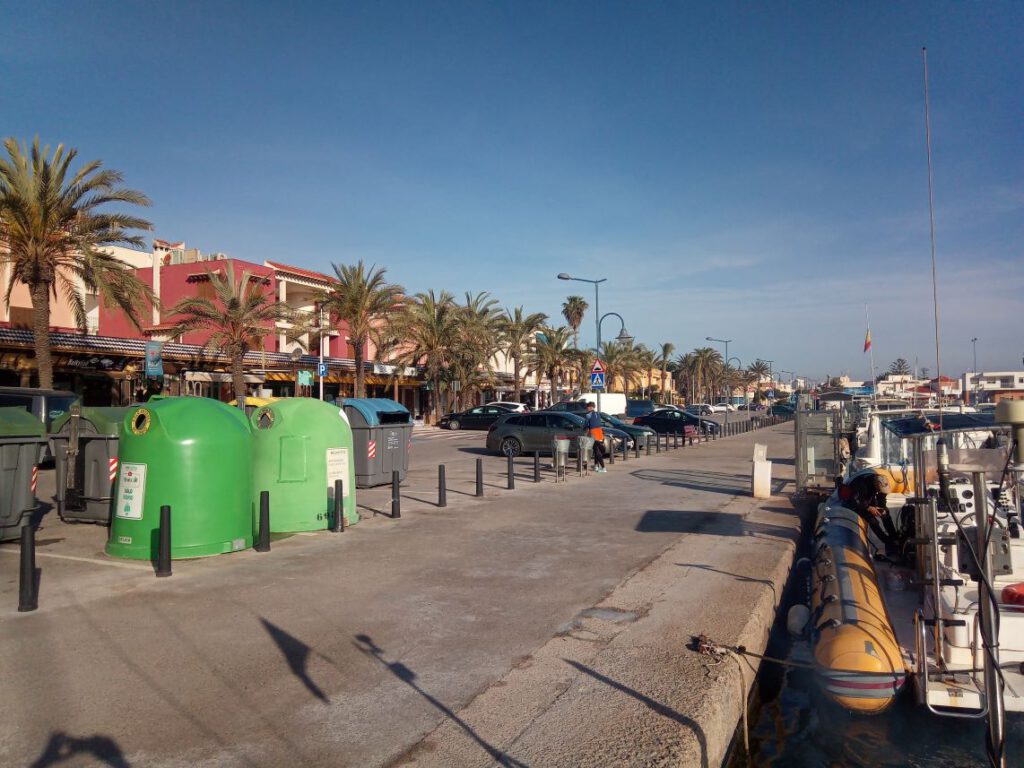
The harbour of Cabo de Palos
And here is the famous cape – Cabo de Palos in the morning
Just after the cape there is only sandy beach, this is where the Costa Blanca begins, if you include the Mar Menor. Endless beaches and lots of concrete.
There are only rocks in the water, with a window.
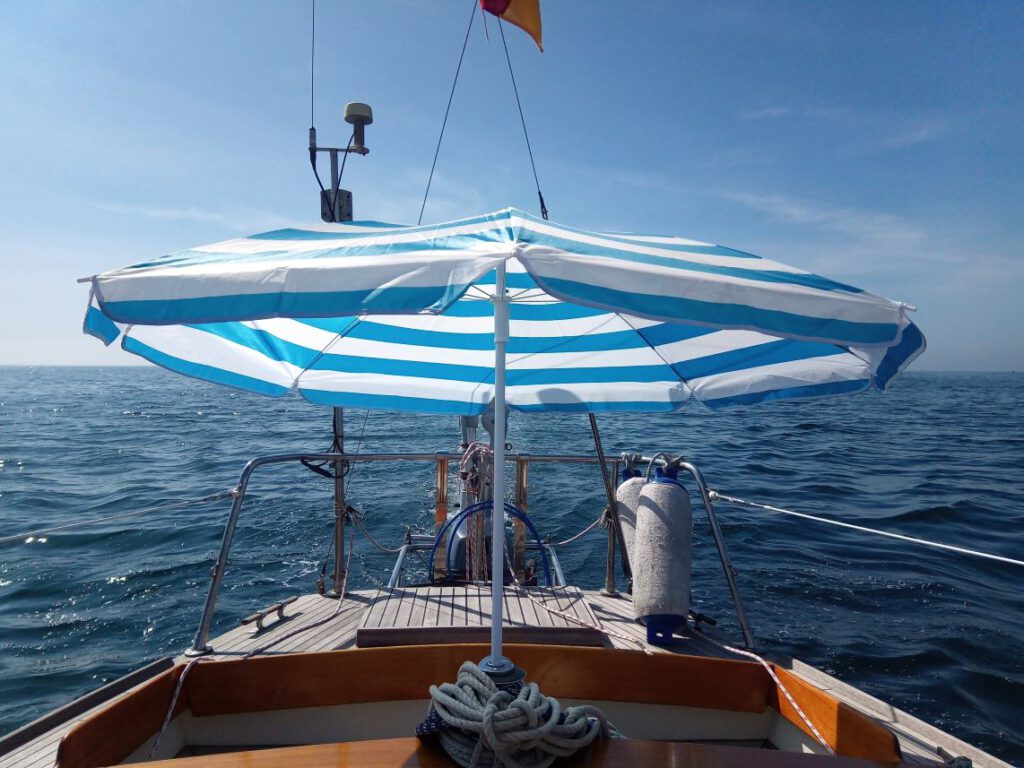
My sun protection! It’s wonderful, when it’s calm and the sun is almost vertical. You can sit at the tiller for hours.
The major sailing centres start here from Torrevieja in the Valencia region, large marinas, not exactly cheap and lots of regatta action.
Thursday 18 April 24
Valencia
I managed the 130 nautical miles from Torrevieja to Valencia in 8 days, despite a few short breaks. That was my original plan for the route to Seté, but unfortunately, this no longer works out. So now Barbara will come to Barcelona, and then we will sail together across the Mediterranean to Seté and then through the Canal du Midi and the Canal de Garonne back to the Bay of Biscay.
In Garrucha I noticed for the first time the dust that had settled on the whole boat. I put it down to the sand loading, but since then the dust has not stopped. At some point I stumbled across a report in Costanews, there is extreme fine dust pollution from the Sahara on the entire east coast of Spain. If this dust reaches Northern Europe, there must be a lot of dust in the air here. Even there was a recommendation on the Costa Blanc that children and old people should not go out on the streets. So what to do to older sailors like us?
The haze in front of the mountains is fine dust.
Rocks, rocks, and rocks on the rocky coasts, then beaches with concrete castles and towns that are not particularly different. It can get boring.
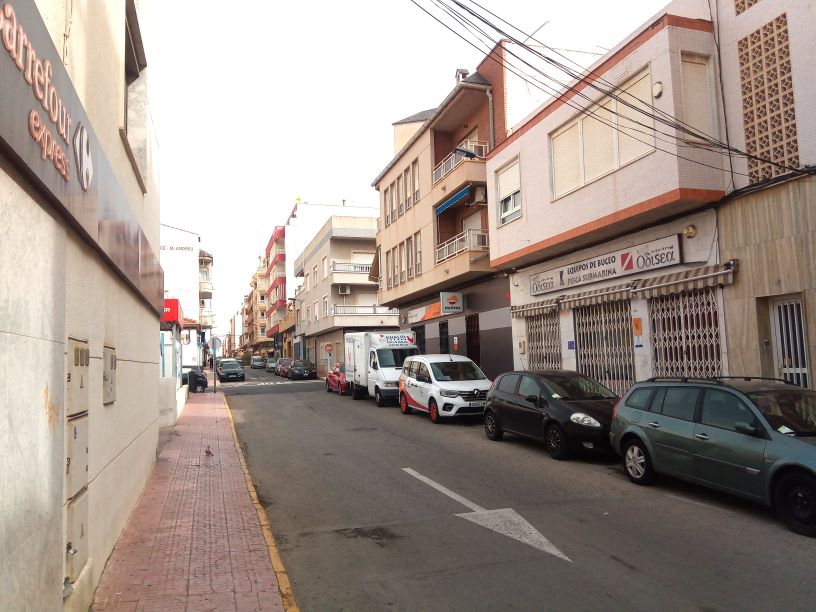
Torrevieja
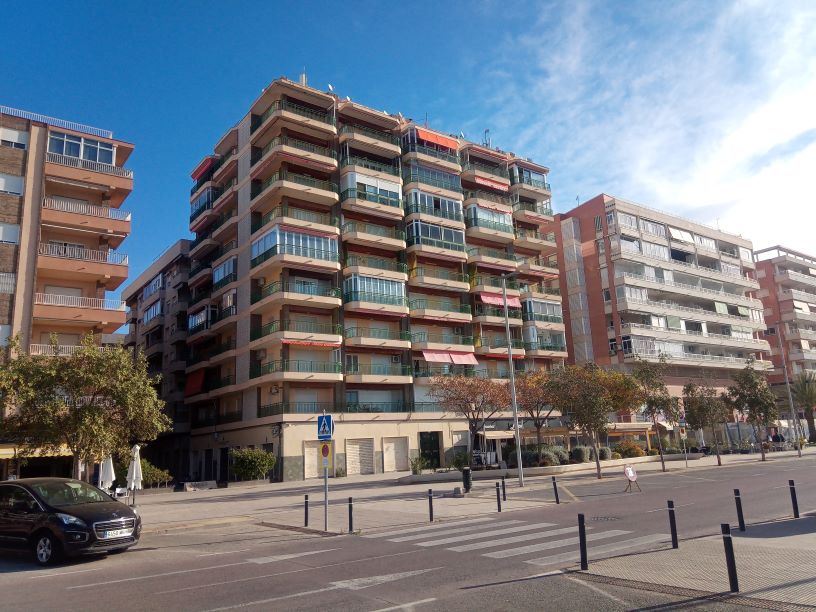
Santa Pola
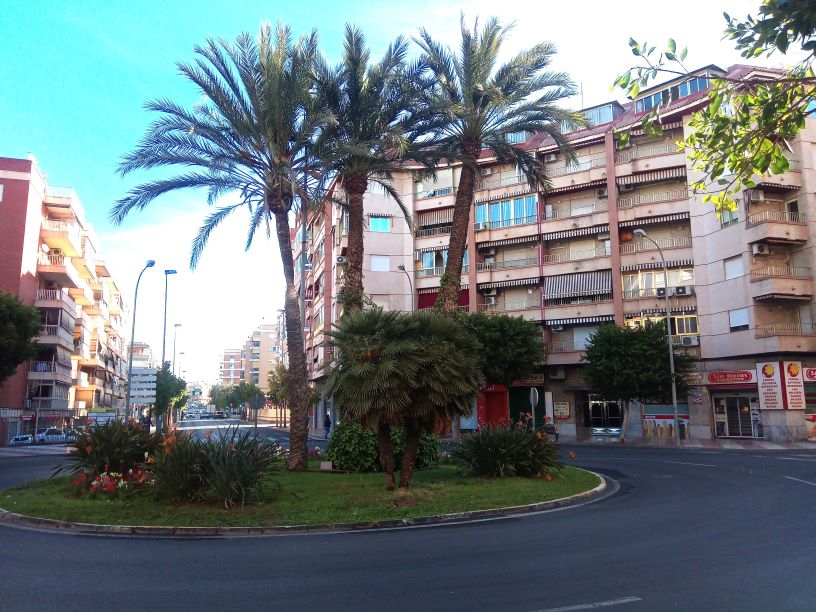
Green traffic island in Santa Palo, with palm trees!
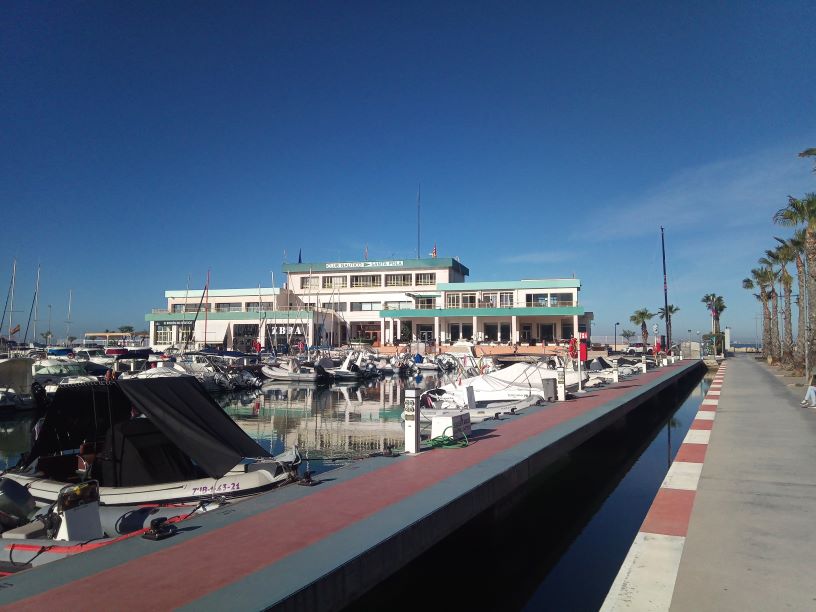
The clubhouse of Club Nautico Santa Pola, where at least six women worked in the administration!
La Vila Joiyosa translates as a cheerful town. Why is that? I didn’t find out.
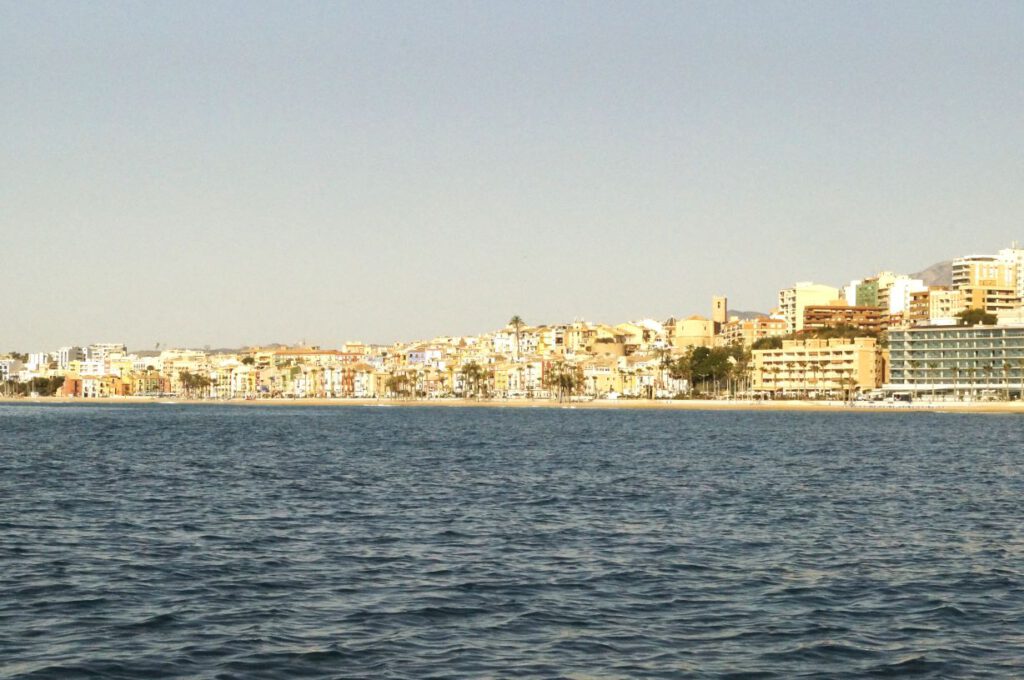
There used to be beautiful houses here, maybe that’s why they were cheerful.
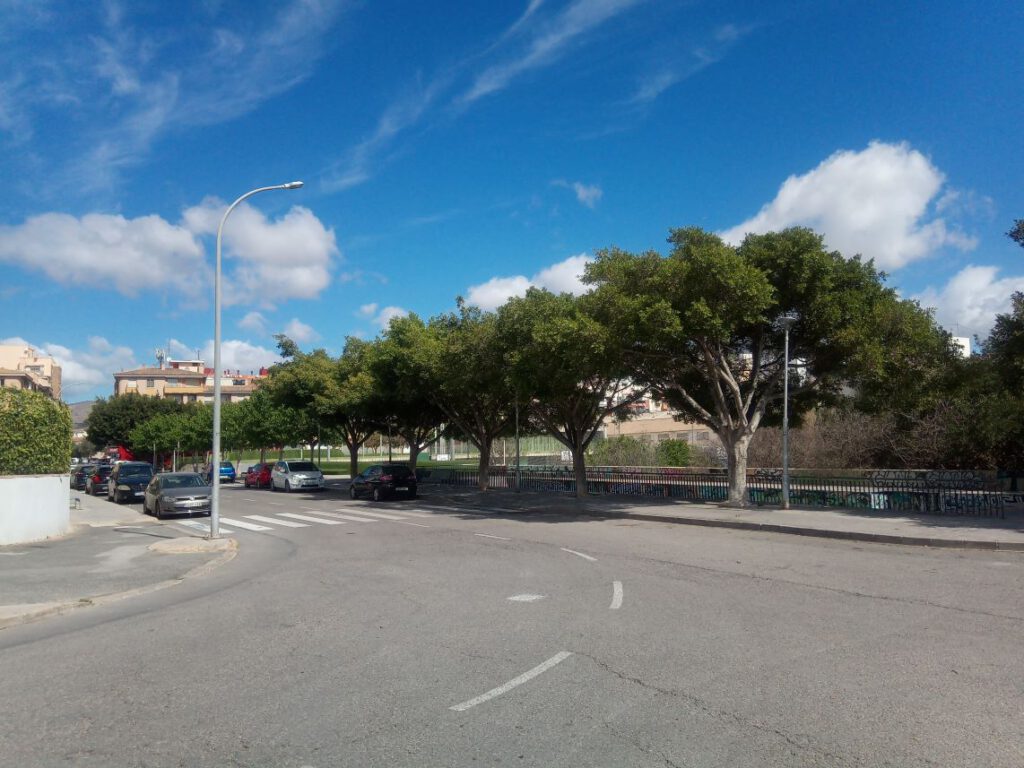
The first trees in this town, I haven’t seen that for a long time. There were only ever palm trees.
A small rocky ridge stretches towards Cabo Negre, the last small peak before Valencia.
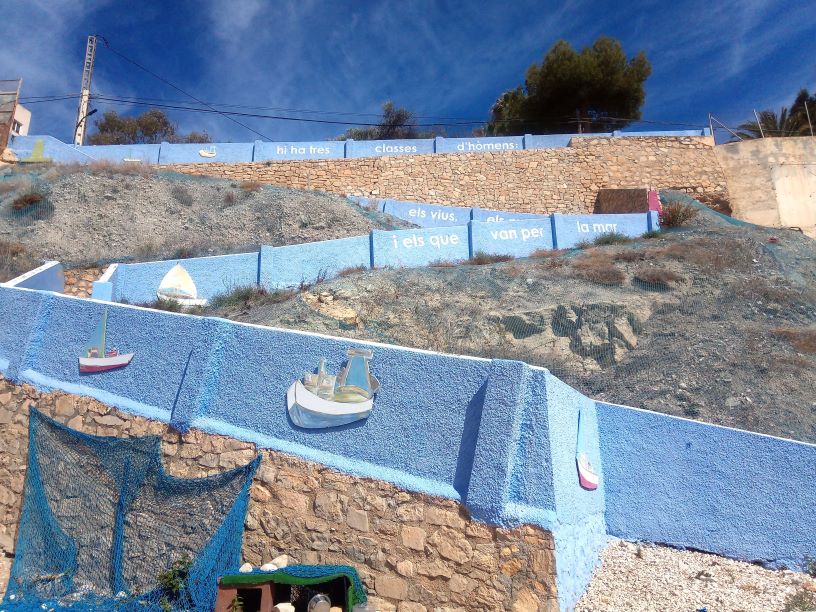
You have to climb up there to go shopping.
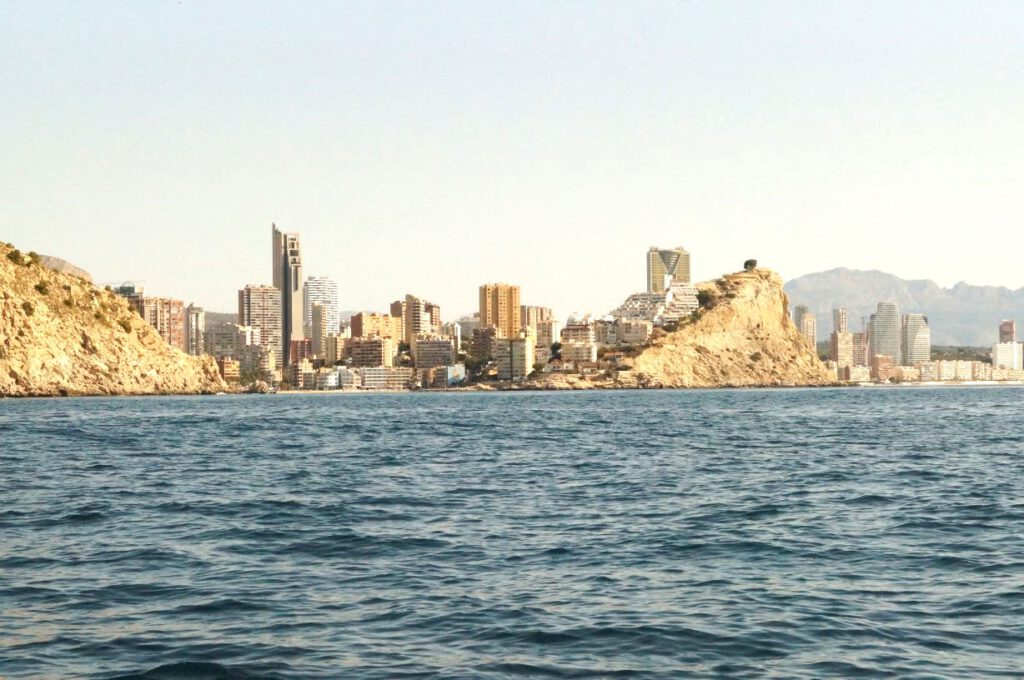
After La Vila Joiyosa comes Benidorm,
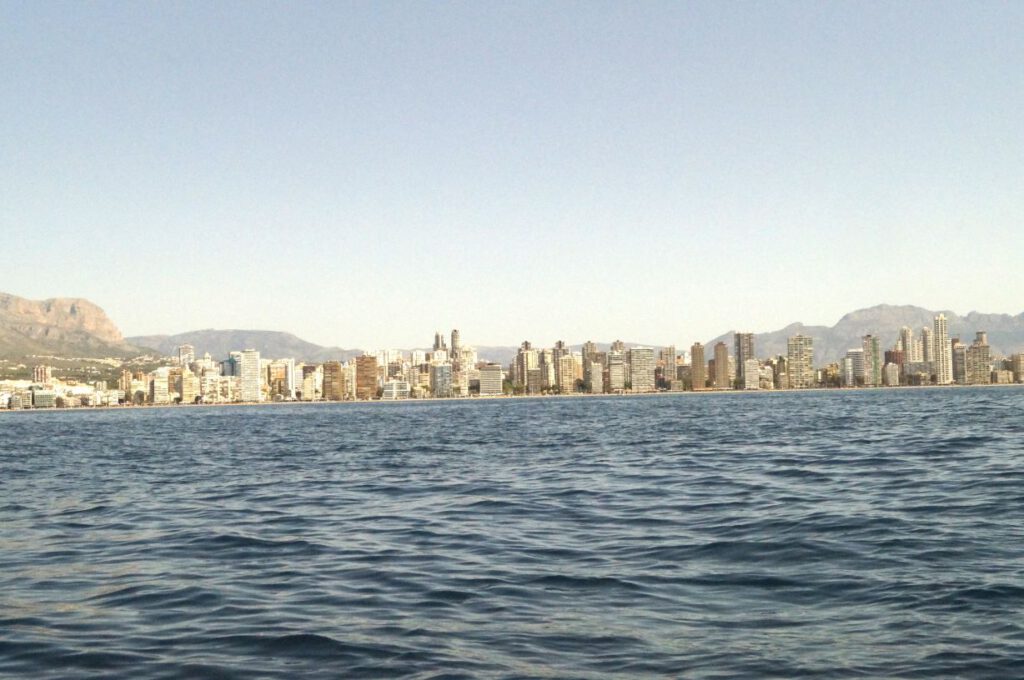
the Manhattan on the Costa Blanca.
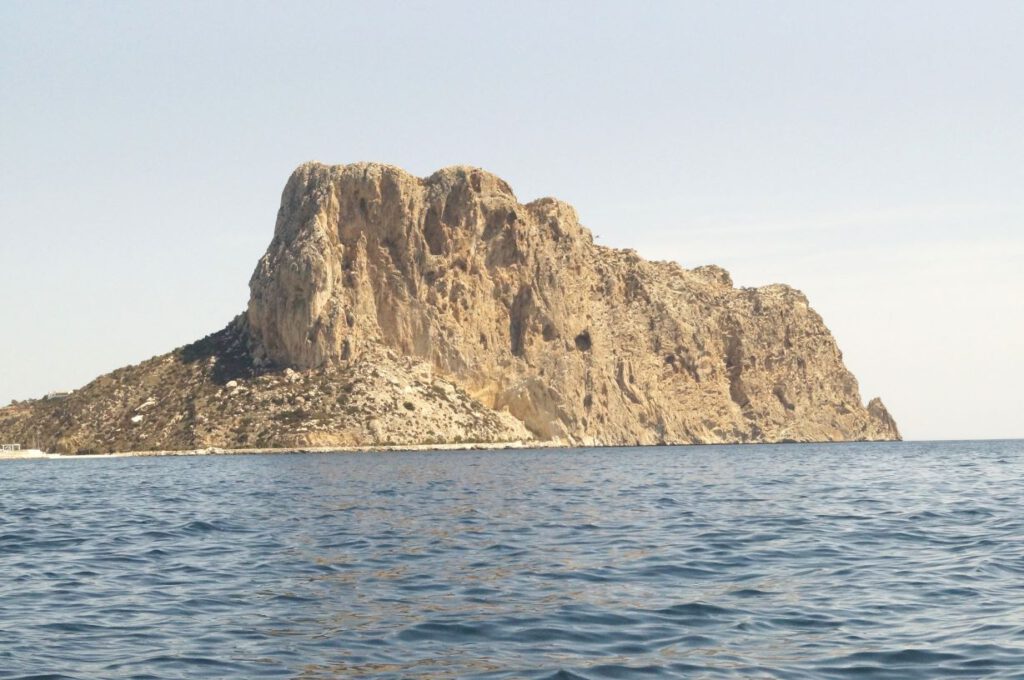
The rock of Calp shone out at me for a long time, also known as the Gibraltar Rock of Spain. After all, it is 330 metres high. Of course, I wanted to go up there.
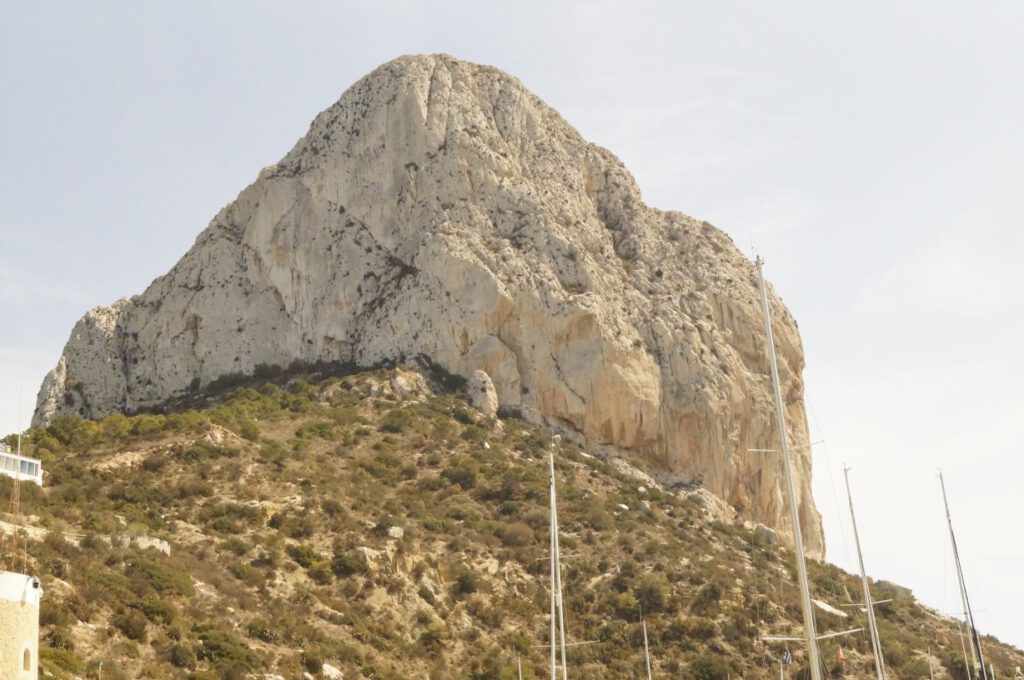
But from the harbour it looked impregnable, which wasn’t the case. Only you can’t see is that they have drilled a tunnel to the east side. From there, it’s possible to reach the summit in half an hour on a proper mountain hike.
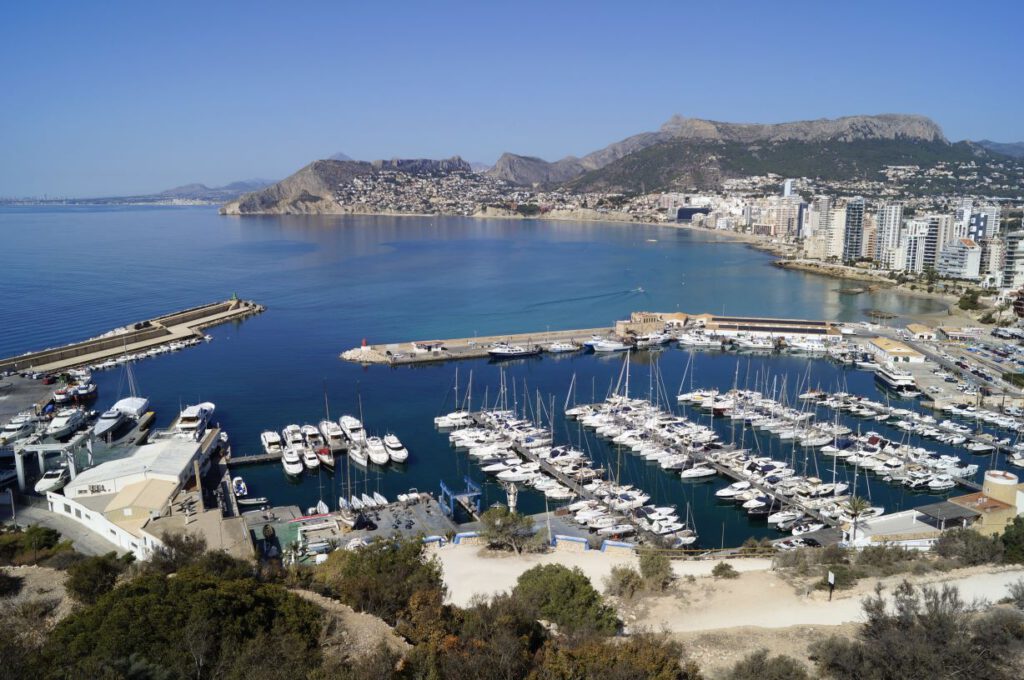
Yes, I managed a third of the height, then it was over for me. You can only continue here at the entrance barrier if you book in advance, at weekend nothing works spontaneously. The path up the rock closed to last-minute persons like me due to overcrowding. Instead, I had a beautiful view of the harbour.
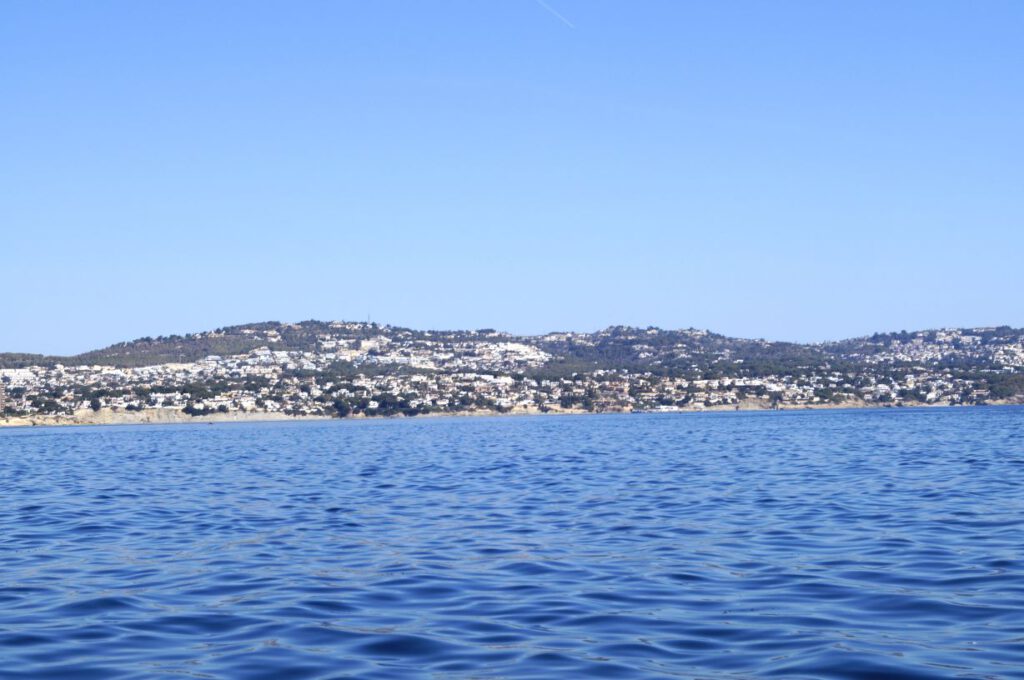
On the way to the Cabo Negre, Spain’s coastline was green for the first time, with shrubs and small sections of forest. The Cabo should actually be called Cabo verde (green) and not Cabo negre (black).
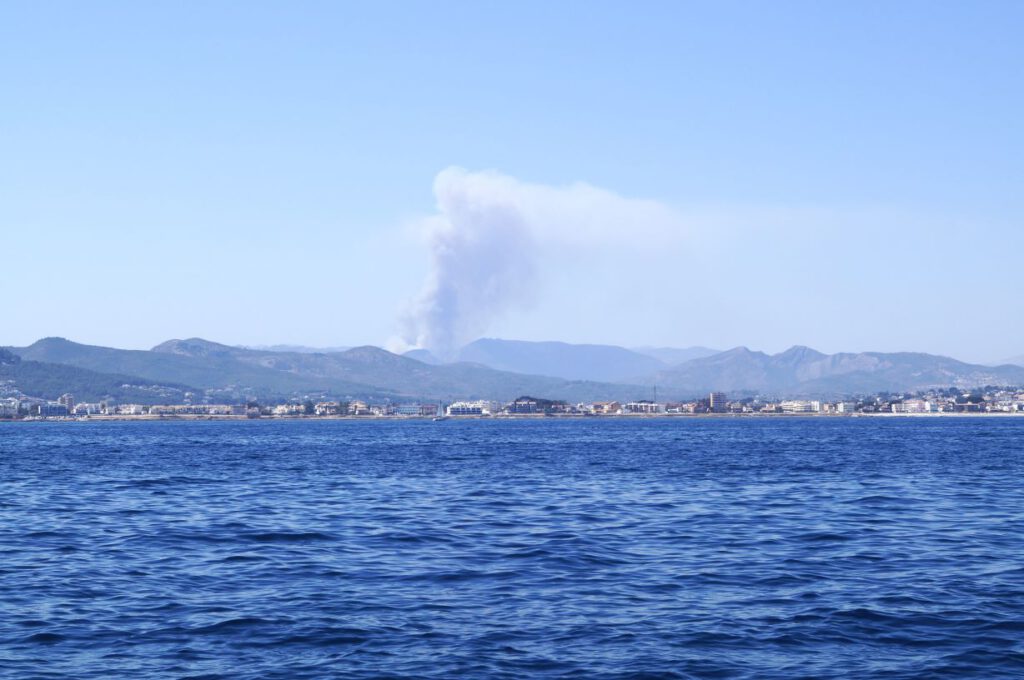
After Cabo Negre, I saw this. As soon as there are trees and forest, there is a fire in Spain. It was described in the news as the first major forest fire in Spain. It’s too warm and too dry here. I can only confirm that, my hydrometer has already dropped to 25%, which is extremely dry air.
The last rocks at Cabo San Antonio, five nautical miles further on.
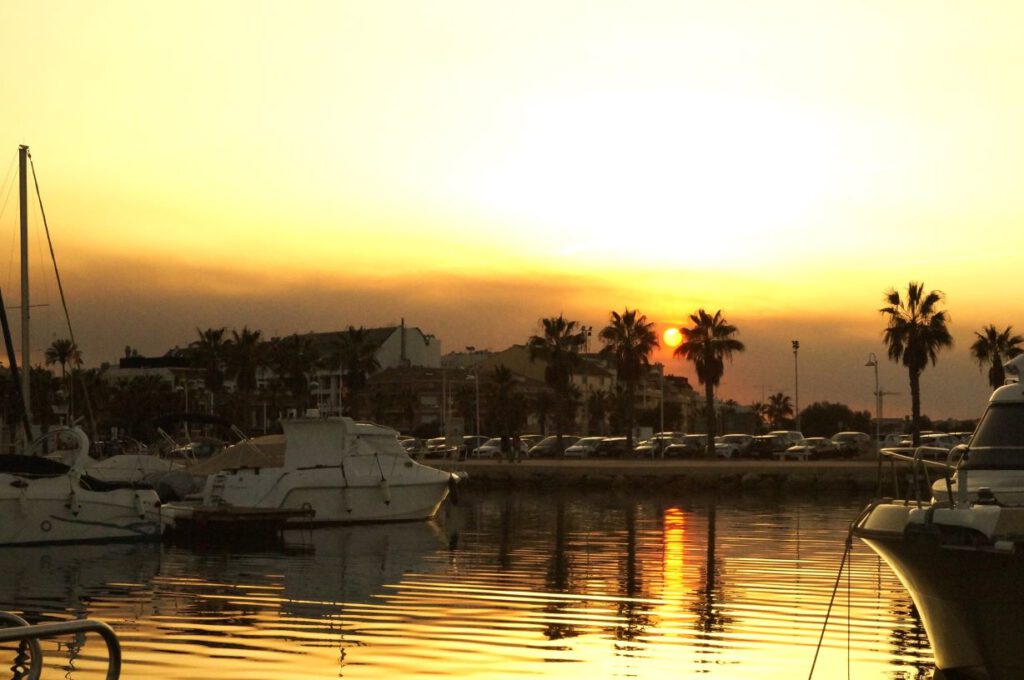
In the evening in Denia you could marvel at the plume of smoke.
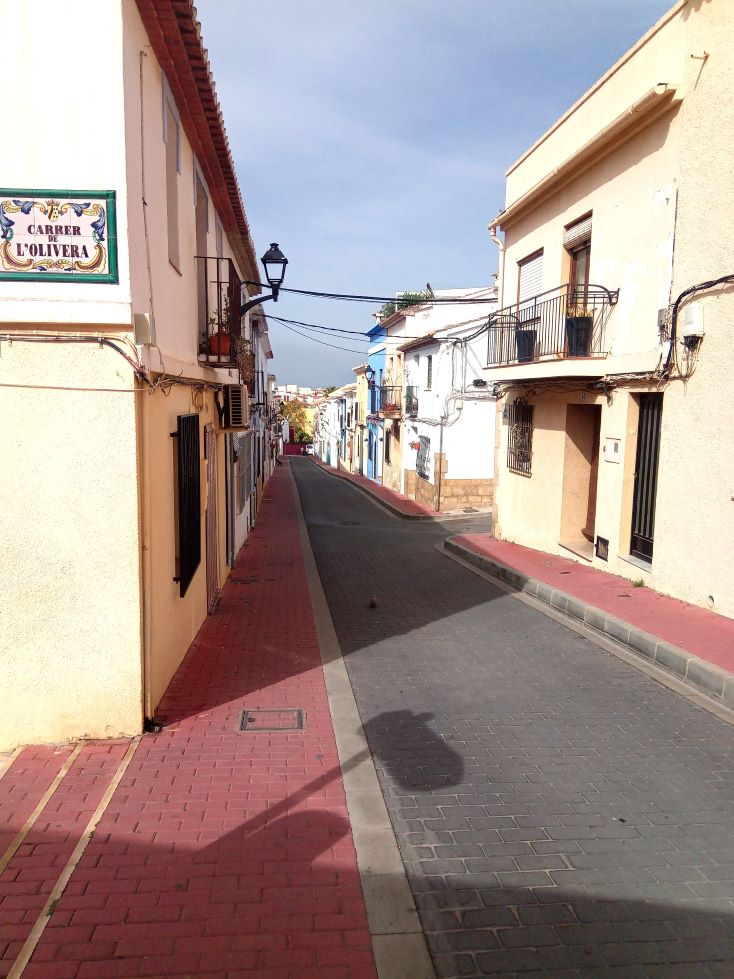
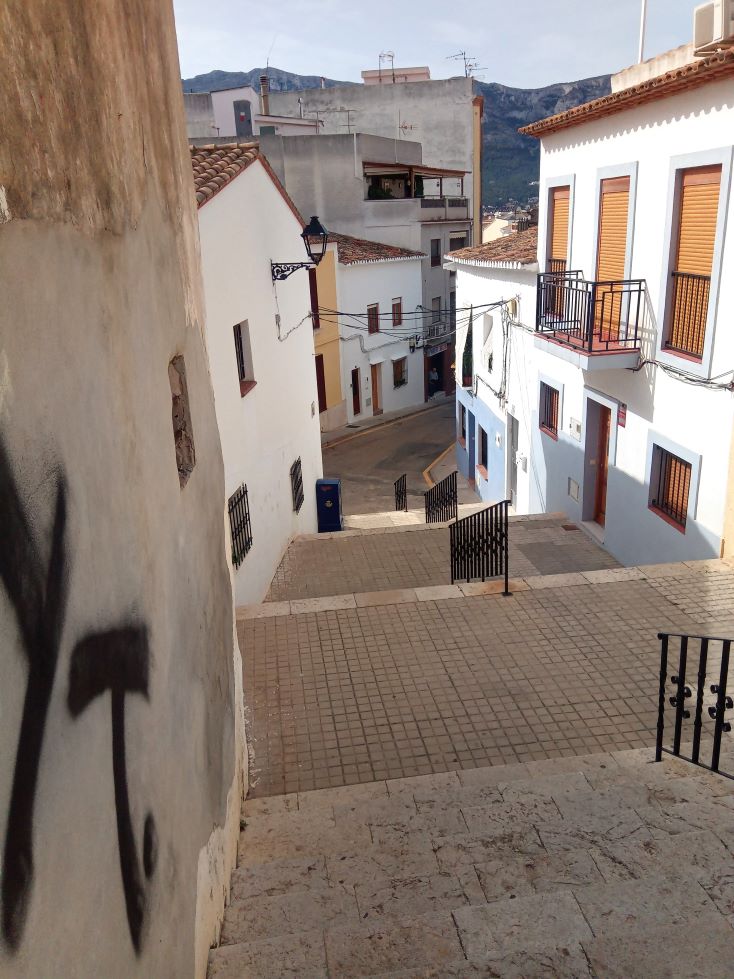
Denia is an exception among the towns that are always the same. There is an old town centre around the Castello and behind very close by you can go hiking.
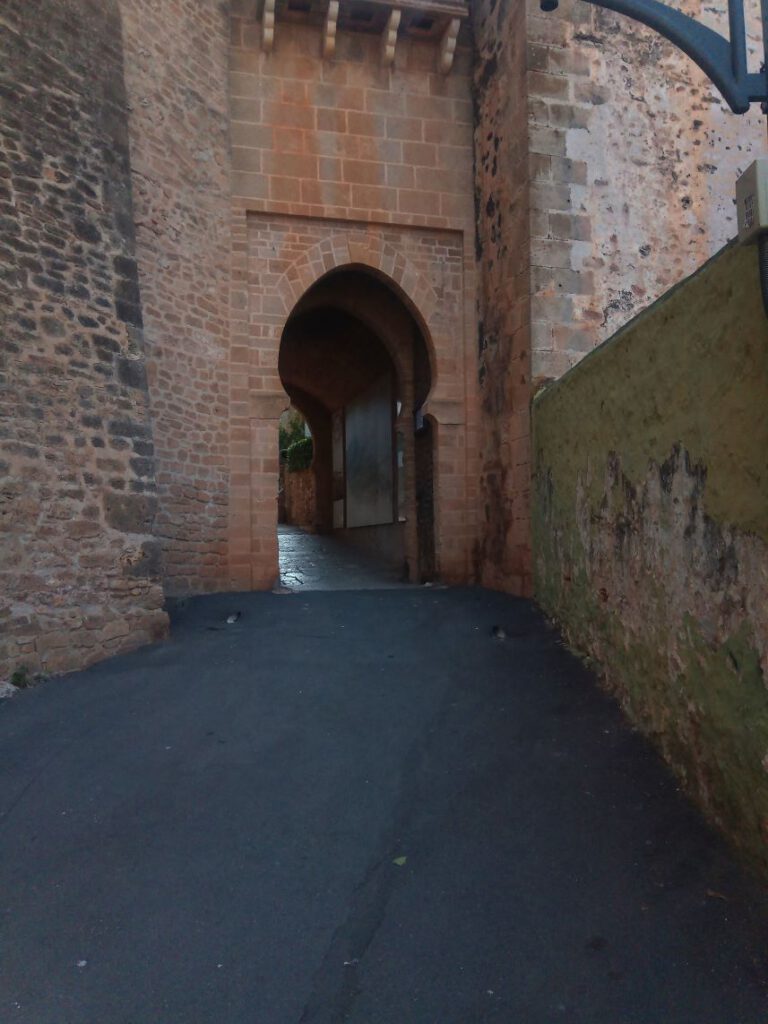
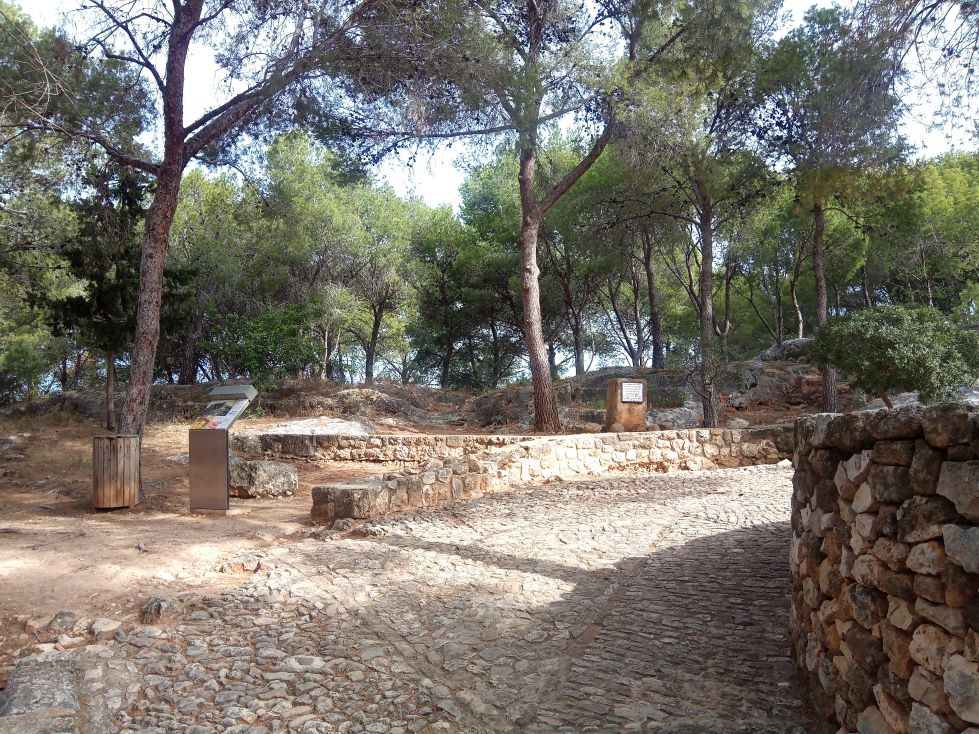
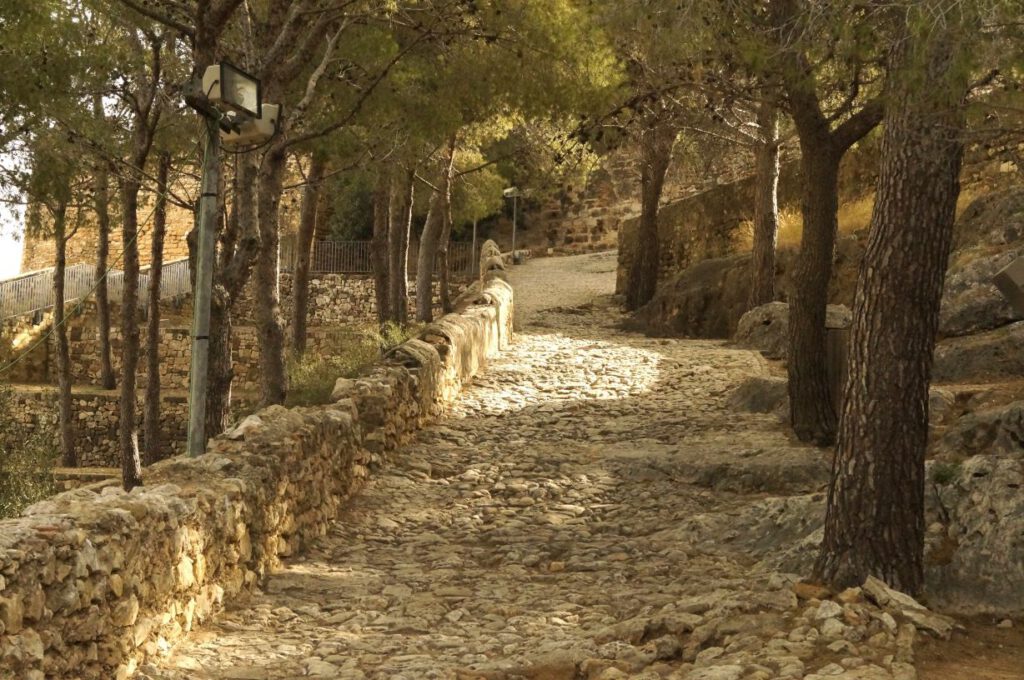
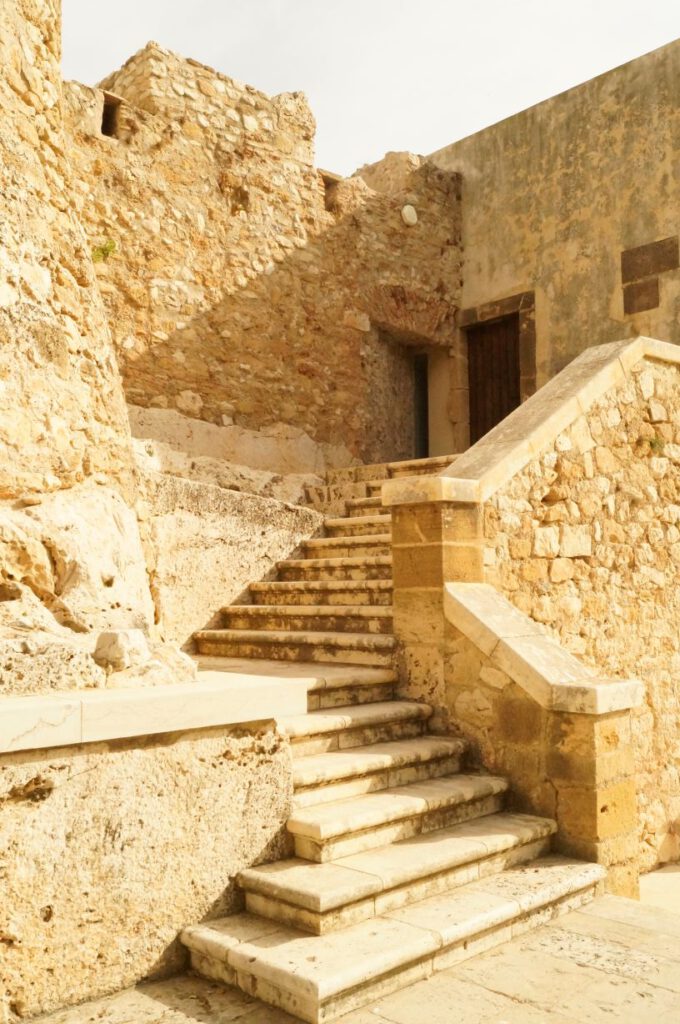
Unfortunately, I only made it to the Castello.
Here in the evening was live music you can listen to it.
Nothing to report from Gandia, in for evening and out tomorrow. I got the engine running smoothly again. It had a few misfires when the throttle was cut. All good again, it was probably a crumb that had to be flushed away first.
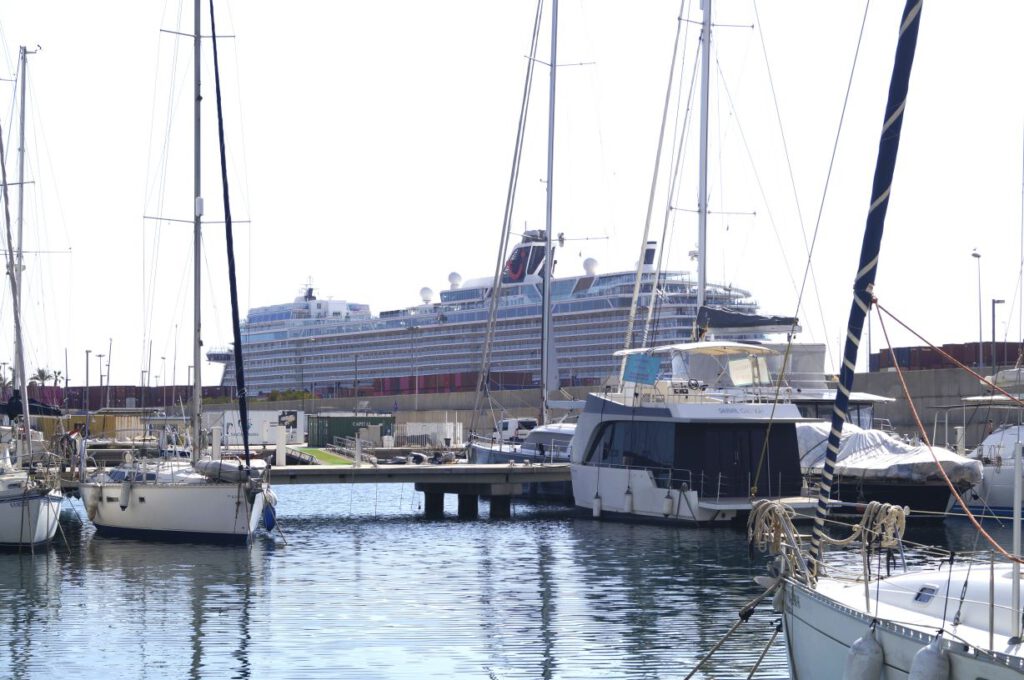
In Valencia, you immediately stumble across the cruisers.
It was a long way to go shopping, you have to walk half an hour to get out of the harbour area. Only then are you on the edge of the city, from here you have to take the bus, you can’t walk here. I had to walk through the sun for almost 1.5 hours to get to the shop and back, there is hardly any shade. I don’t think I’ll do this a second time in this sun.
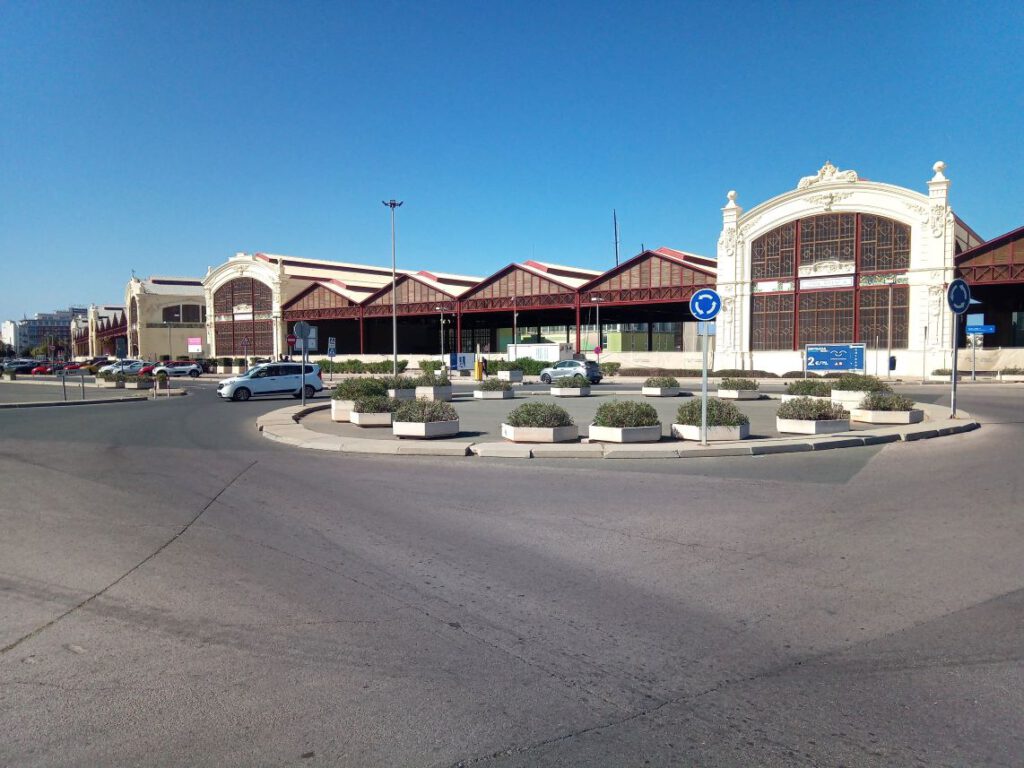
This once was probably a fish auction hall, the façade has been renovated, inside is all rubbish.
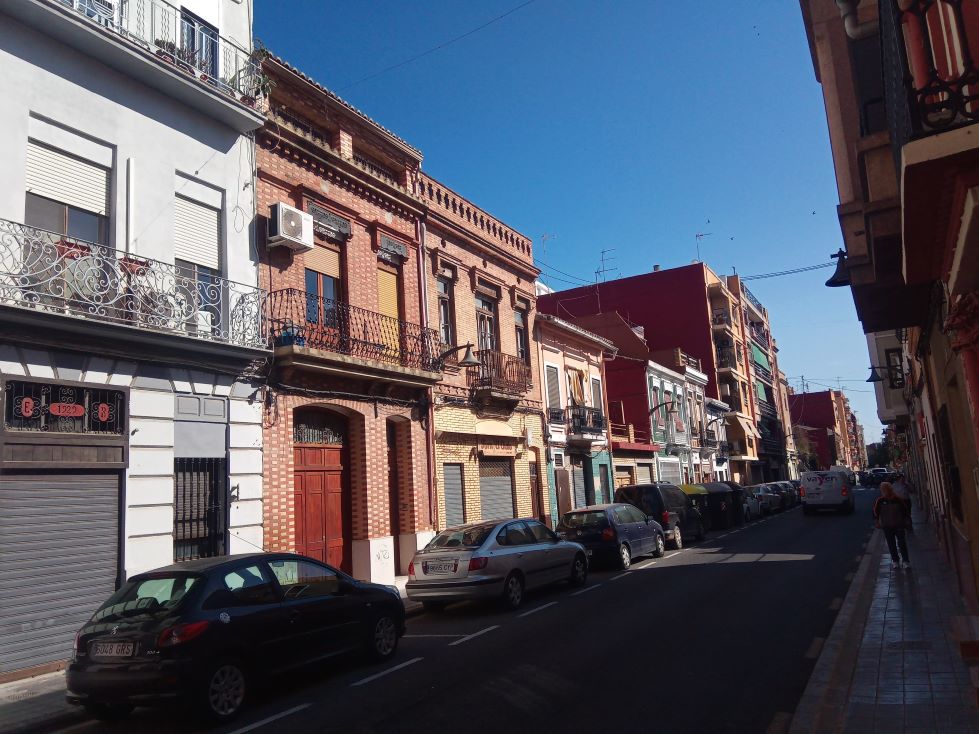
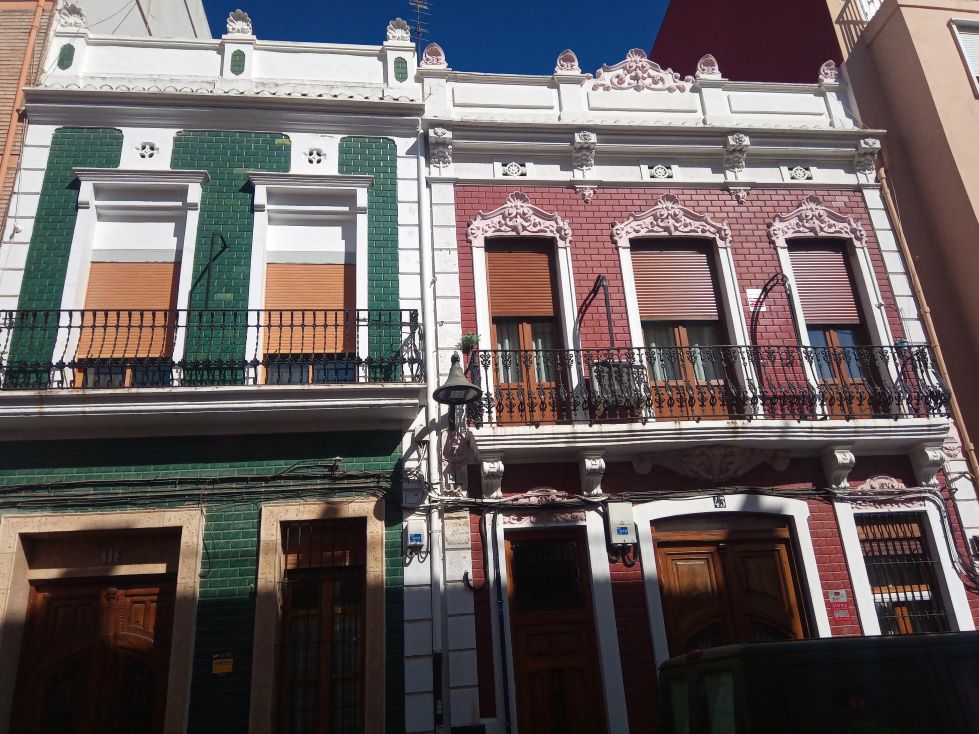
Some nice houses, but this is a redevelopment area. This will be gutted, demolished and unfortunately, as often in cities, functionally new built, soulless, plain new 6 to 10-storey buildings.
Incidentally, I was finally able to unpack the sails again on the last few stretches.
Monday 22 April 2024
Las Fuentes/Alcocebre
Another report from the Valencia region, I’ll be coming to Catalonia on my next trip. The third-largest city in Spain was too big for me, I didn’t visit the centre because it was simply too far away. The way out of the harbour felt like a double barbecue, the sun from above and the hot asphalt or concrete from below. I preferred to stay close to the boat, and I don’t regret it.
On the way north, I see more and more wooded slopes. In addition to tourist resorts and industrial harbours, there are always larger sections with very little development.
The green coast
Almost nothing but nature
Talking of tourism: Spain is in the throes of a major uprising at the moment, especially in the Canary Islands but also in Madrid and Barcelona, where large demonstrations are taking place to demand that this tourist madness be finally curtailed. Apart from the disfigurement of the landscape by concrete castles, there are also very obvious problems. There is always enough drinking water for the tourists, but it is sometimes rationed for the locals. In the Canary Islands, they simply don’t know what to do with the rubbish. Tourism creates jobs? Yes, but strangely enough, the strongholds of tourism are among the poorest regions in Europe. It will be a long road to get out of this mass tourism trap. I think it is understood that things can’t go on like this.
Here in the north of Valencia and Catalonia, there is a lot of industry, which creates skilled jobs with a good income. That’s why these are the “rich” regions of Spain, and of course the north coast from Vasconia (Basque Country) to Galicia is also part of it.
Probably my last port in the Valencia region is characterized by modest tourism and therefore, it is simply beautiful.
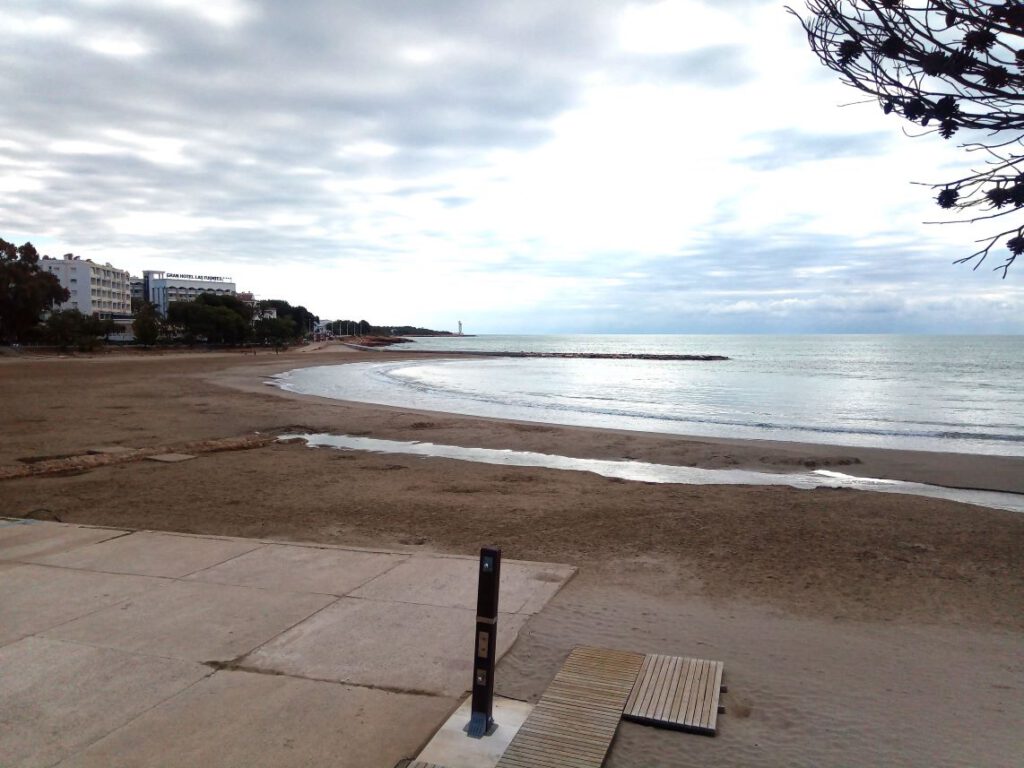
The beach of Las Fuentes in front of the Grand Hotel. But there is even a nicer beach.
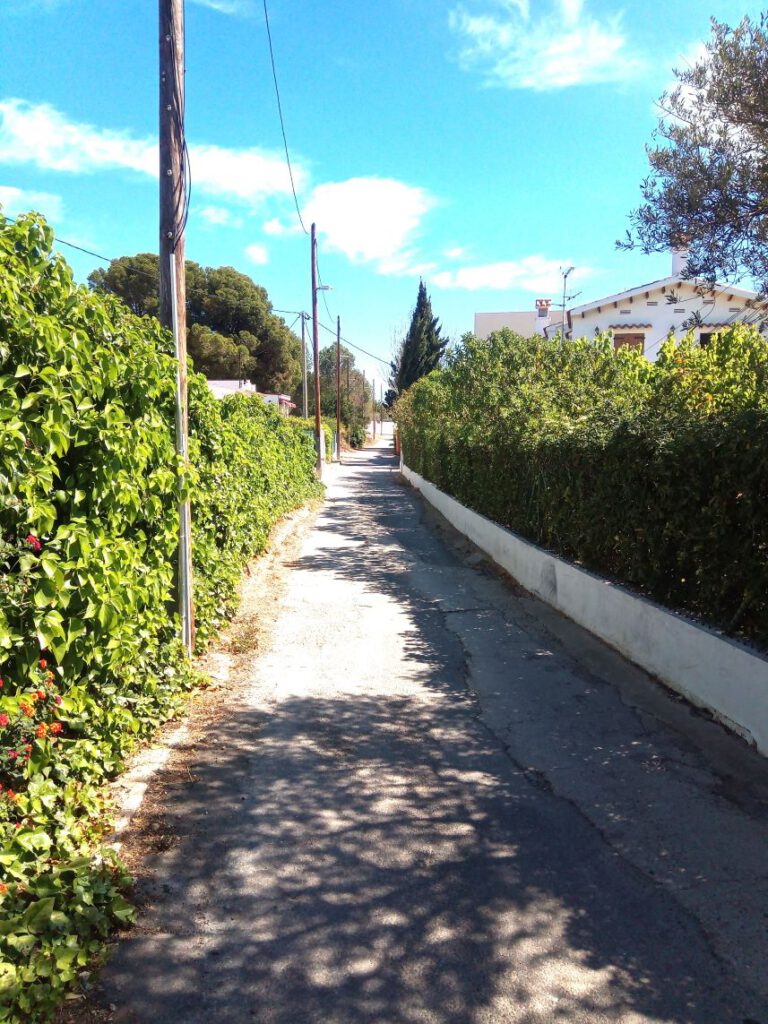
Green ways
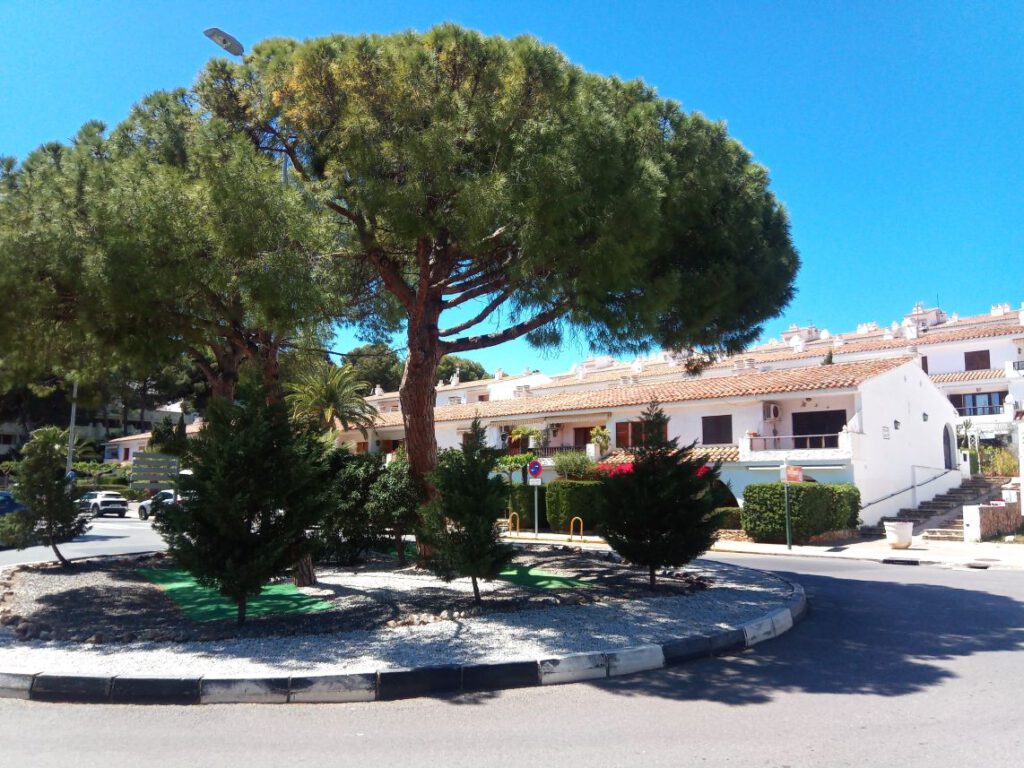
Gently tourism with pine trees
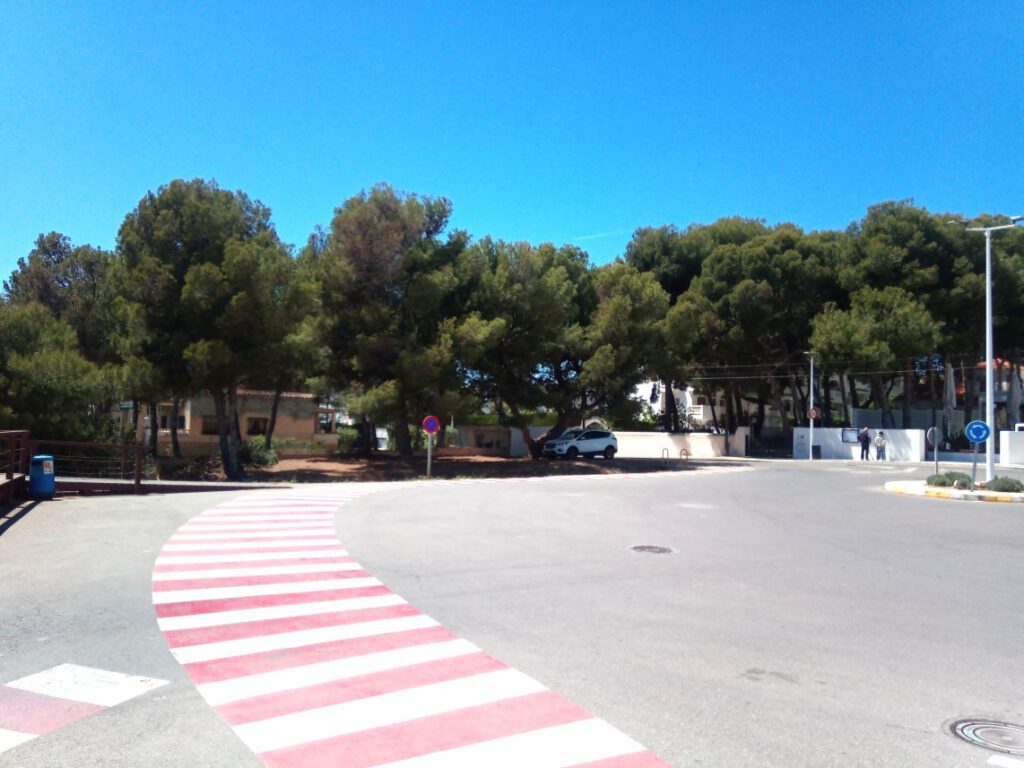
The pine forest in Las Fuentes
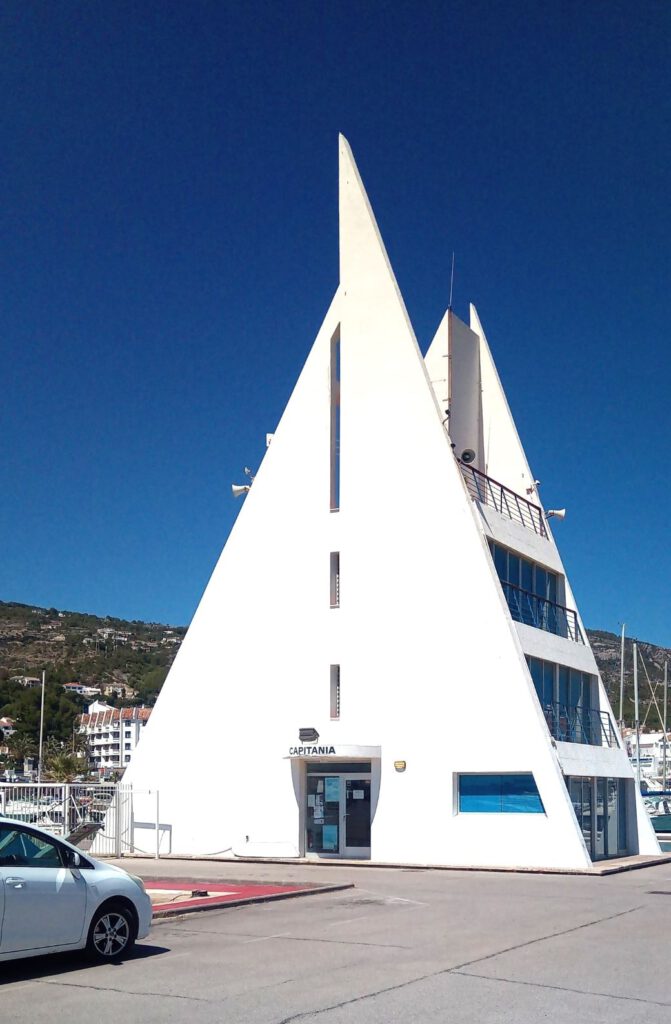
They love their towers in the harbour, always with the Capitaneria inside them.
Continue here: Catalonia
